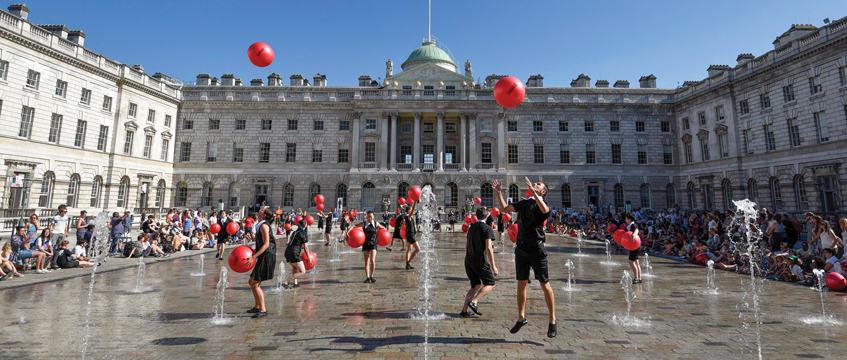It’s arguable that today, more than ever, the job of civic governance sits in the hands of many. Of course, it continues to be led by local government, but is complemented greatly by the support of business communities, community and resident groups, charities, and others who add to the vibrancy and cohesion of any given area.
With continued strain on the public purse, this collective action looks set to continue. And while each group might be motivated by a different driver – political popularity, commercial realities, the desire for a sense of community and a place to provide a great experience – all are united with a renewed sense of civic purpose.
Pushing for progress
Growth is important. Districts across London are working harder than ever to compete for the best talent and the lion’s share of the visitor economy, and are lobbying hard for increased investment to make improvements.
Business improvement districts, or BIDs, give a voice to business communities – championing local priorities and ensuring the right people are at the decision table. Businesses understand that together they can be stronger; lobbying on big, strategic issues that impact on their commercial performance and ability to grow.
The BID model has been proven to deliver area enhancements, good growth and drive investment. There is potential for BIDs (or an evolved version of them) to play an even greater role in good civic governance and growth in London. We have the opportunity to create a new civic compact between local government, residents and businesses. This could facilitate a new, more collegiate way of making local decisions.
Streamlining the system
We need to revisit some of the legislation, especially around the set-up, which can be cumbersome and extremely complicated.
We also need to consider a new way of strengthening their role in local decision making, taking account of all the groups BIDs engage with. In some ways the name is not helpful. Perhaps a better thought would be NIDs – neighbourhood improvement districts – or CIDs – community improvement districts?
Although there is a need to look at how BIDs can evolve, there is no doubting their power today. There are now over 300 BIDs in the UK, more than 60 in London alone, and many voluntary partnerships (in many cases a precursor to establishing a BID). London BIDs have grown in ambition and importance.
Most recently, partnerships have been established in Fleet Street and in the City of London’s Eastern Cluster, made up of property owners and occupiers from these areas – both demonstrating the continued appetite for collaboration and the blurring of the lines between what our public sector colleagues look after and what the private sector takes an interest in.
As BIDs mature they are taking on a more strategic, place-shaping role, developing, championing and sponsoring major transport and public realm improvements, working hand in hand with the local authority, business representatives and local residents. Some major projects in central London are unlikely to have happened without the catalysing influence of the BIDs.
For example, The Northbank BID led on moves to reimagine the challenging Aldwych gyratory and explore the creation of a new piazza in front of Somerset House. The project has now been taken on and driven by Westminster Council.
Force for good
I see every day the positive force for good of BIDs. An evolved BID model is one that can continue to thrive for many years to come – and deliver significant benefits to businesses, residents, visitors and public sector partners.
Now is the time to reframe what we expect from BIDs – better defining and being ambitious about their scope, removing some of the red tape and administrative burdens, and at the same time strengthening and formalising their community engagement work. In doing this we will enable all business partnerships to better harness the enterprising, can-do collaborative spirit that characterises the very best London BIDs.
Ruth Duston is managing director of Primera Corporation











